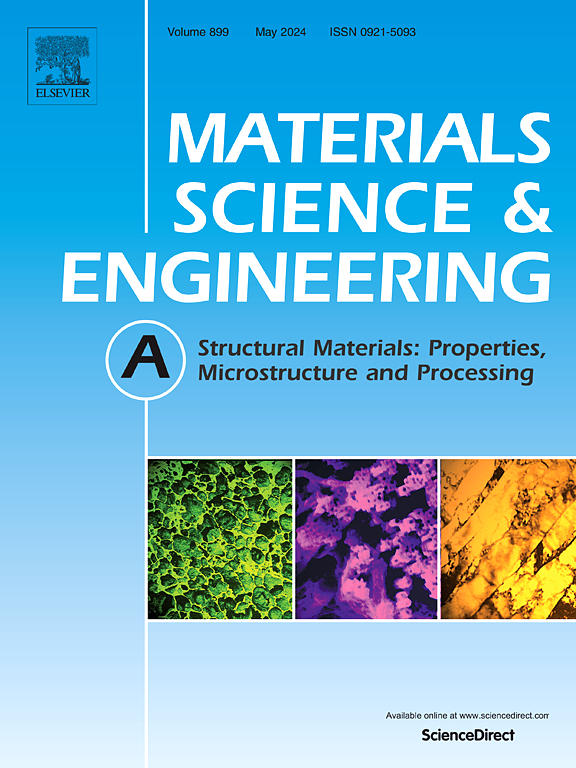纳米颗粒共沉淀法同时增强低碳钢的冲击强度和韧性
IF 6.1
2区 材料科学
Q1 MATERIALS SCIENCE, MULTIDISCIPLINARY
引用次数: 0
摘要
本文研究了钼对多种纳米颗粒强化低碳超高强钢强度和延展性/韧性的影响。回火钢由回火马氏体、粒状贝氏体和纳米颗粒组成。当回火温度从500℃提高到600℃时,析出行为发生变化,即析出物逐渐由分散的Cu或NiAl纳米颗粒演变为核-壳结构(富Cu核+ NiAl壳)多相析出物。屈服强度从1360±15 MPa降低到1075±15 MPa,抗拉强度从1435±30 MPa降低到1110±30 MPa。然而,在600°C回火时,通过增加高角晶界的比例和减小马氏体和贝氏体包体之间的纳米硬度差异,塑性从14%提高到20%,低温冲击韧性从5j提高到77j(在- 40°C)。Mo通过降低Cu、Ni和Al的扩散速率,有效抑制了高温回火过程中富Cu颗粒和NiAl析出相生长并结合而导致的多相纳米颗粒粗化,从而大大增强了析出相对力学性能的贡献。这些发现为开发超高强度同时保持良好延展性和韧性的先进钢提供了可行的策略。本文章由计算机程序翻译,如有差异,请以英文原文为准。
Simultaneous enhancement of impact strength and toughness of a low carbon steel with co-precipitation of nanoparticles
This study investigates the influence of molybdenum on the strength and ductility/toughness of low-carbon ultra-high-strength steels strengthened by multiple nanoparticles. The tempered steel consists of tempered martensite, granular bainite, and nanoparticles. Increasing the tempering temperature from 500 °C to 600 °C alters the precipitation behavior, that is, the precipitation gradually evolves from dispersed Cu or NiAl nanoparticles to core-shell structured (Cu-rich core with NiAl shell) multiphase precipitates. This evolution reduces the yield strength from 1360 ± 15 MPa to 1075 ± 15 MPa and the ultimate tensile strength from 1435 ± 30 MPa to 1110 ± 30 MPa. However, tempering at 600 °C enhances ductility from 14 % to 20 % and low-temperature impact toughness from 5 J to 77 J (at −40 °C) by increasing the fraction of high angle grain boundaries and reducing the nanohardness disparities between the martensite and bainite packets. Mo effectively inhibits the multiphase nanoparticles coarsening caused by the growth and coalescence of Cu-rich particles and NiAl precipitates during high-temperature tempering by reducing the diffusion rates of Cu, Ni, and Al. Such effect substantially enhances the contribution of precipitates to mechanical properties. These findings provide a viable strategy for developing advanced steels with ultrahigh strength while retaining good ductility and toughness.
求助全文
通过发布文献求助,成功后即可免费获取论文全文。
去求助
来源期刊

Materials Science and Engineering: A
工程技术-材料科学:综合
CiteScore
11.50
自引率
15.60%
发文量
1811
审稿时长
31 days
期刊介绍:
Materials Science and Engineering A provides an international medium for the publication of theoretical and experimental studies related to the load-bearing capacity of materials as influenced by their basic properties, processing history, microstructure and operating environment. Appropriate submissions to Materials Science and Engineering A should include scientific and/or engineering factors which affect the microstructure - strength relationships of materials and report the changes to mechanical behavior.
 求助内容:
求助内容: 应助结果提醒方式:
应助结果提醒方式:


